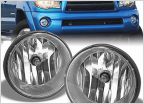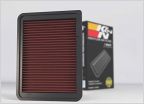-
Welcome to Tacoma World!
You are currently viewing as a guest! To get full-access, you need to register for a FREE account.
As a registered member, you’ll be able to:- Participate in all Tacoma discussion topics
- Communicate privately with other Tacoma owners from around the world
- Post your own photos in our Members Gallery
- Access all special features of the site
Charging LiFePO4 Battery w/ AC to DC charger from bed outlet?
Discussion in '2nd Gen. Tacomas (2005-2015)' started by Peter603Taco, Jul 17, 2025.


 Spark plug question-Toyota vs. Napa
Spark plug question-Toyota vs. Napa Upper control arm
Upper control arm Exhaust flange gasket question.
Exhaust flange gasket question. Power Stop k137 front brake kit?
Power Stop k137 front brake kit? 5lug lighting
5lug lighting 2008 2.7L Cold Air Intake????
2008 2.7L Cold Air Intake????











































































